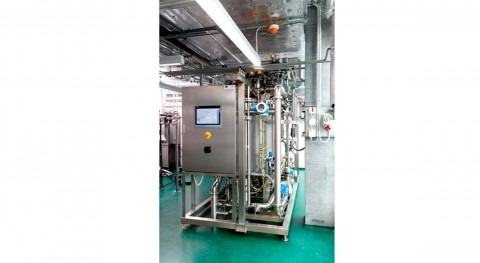Heartbeat Technology, by Endress+Hauser, guarantees permanent diagnostics and verification without process interruptions, as well as cost-efficient and safe plant operation during the entire life cycle. A broad range of Endress+Hauser devices with Heartbeat Technology are available, which combine diagnostic, verification and monitoring functions for process optimization. We talk about this technology with Oliver Reher García, Product Manager for Flow at Endress + Hauser since 1992 and safety expert in Spain on the implementation of the SIL and ATEX standards in this company.
.jpg)
Oliver Reher García, Product Manager for Flow at Endress + Hauser
Question: What is the Heartbeat Technology and what are its applications in the water sector?
Answer: Heartbeat Technology is a self-verification feature of instruments; the vast majority of industrial measurement equipment: water flow meters, level, pH and temperature transmitters, etc. already include self-diagnostics. But the main characteristic of Heartbeat Technology is that the instrument can generate by itself (upon the user's demand) a detailed PDF report on the operating status of the instrument itself.
Q: Please tell us about its main features
A: An instrument with Heartbeat Technology comes out of the factory with a digital footprint of the status of all components that are key for its operation; this digital footprint includes values measured in mV, mA and even ohms.
When the instrument reaches the client and he/she decides to do a Heartbeat verification, the instrument compares the current values of the key components with the digital footprint from the factory, and if the comparison tolerance is below 1%, it gives a positive result in the verification report of the analysed component.

Q: What problems related to water cycle management does it address?
A: In some applications to measure the level or specially the flow, particularly when the flow meter is used to bill water treated in a waste water treatment plant, there is a legal requirement to calibrate the equipment regularly. To calibrate a flow meter, you have to disassemble it from its location and take it to a calibration service (national or international), which is practice is not possible, because the plant cannot be without an element to bill the amount of water treated. Authorities understand this problem and they are starting to accept a verification of the status of the flow meter instead of a calibration; at least this way you can show that the element you use to measure is in good working condition.
Q: How does it differ from other technological solutions in the market?
A: Most manufacturers, in the case of flow meters, can verify the status of the equipment, but to do it they have to send a technician with very specific tools, such as simulators, software patented by the supplier, and other elements that can verify the status of the equipment. During the time that it takes to verify the equipment, the flow meter cannot give you a measurement. Heartbeat Technology, and in this case Heartbeat verification, is fast: in 2 minutes you can do the verification and save a PDF report, and maybe the most important thing is that the user can do it him or herself because no special software or tool (simulator) is necessary.
'Heartbeat Technology, and in this case Heartbeat verification, is fast: in 2 minutes you can do the verification and save a PDF report'
Q: What did the launch of this product mean for the water sector?
A: With the Heartbeat Technology you can save time, and in particular it ensures measurements are constantly available at measuring points.
Q: What are the business and development expectations for this type of technologies in the water sector?
A: Endress+Hauser is a leading supplier of instruments for the water industry; in Spain we have been supplying equipment to waste water treatment plants (municipal and industrial) and drinking water treatment plants for 25 years. We know the market well and we know that Heartbeat Technology will set a trend in the sector.

Q: Finally, how has technology changed in the water sector? And what are the main challenges ahead?
A: The most important technological development in the water industry so far is digitalisation. Not long ago, the user demanded simple signs from field equipment to monitor processes, for example a sign providing the instant flow or totalised flow from a flow meter, to know the amount of water treated. Now equipment provides a lot more information, and if you can read and interpret the information, you can use a proactive maintenance strategy instead of reactive maintenance (responding after the equipment fails). Transmitting all of this additional equipment information to the control room requires a digital fieldbus. A Heartbeat verification of a field instrument can be done from the PLC or control system, as long as we use a communication fieldbus with the instrument.





